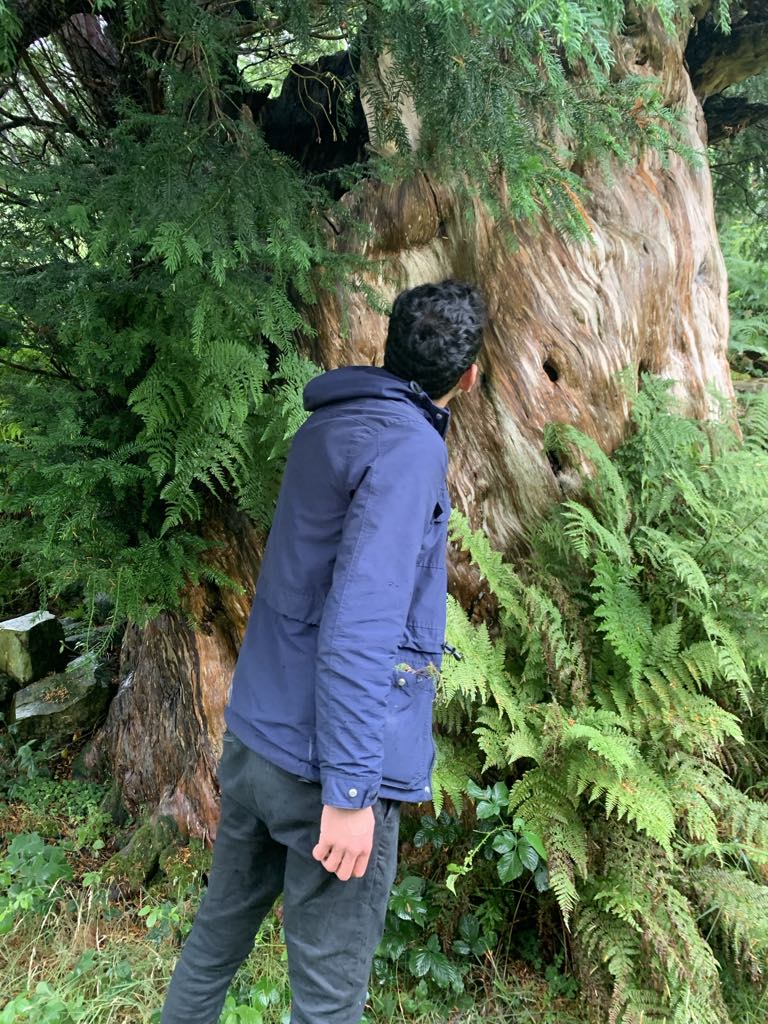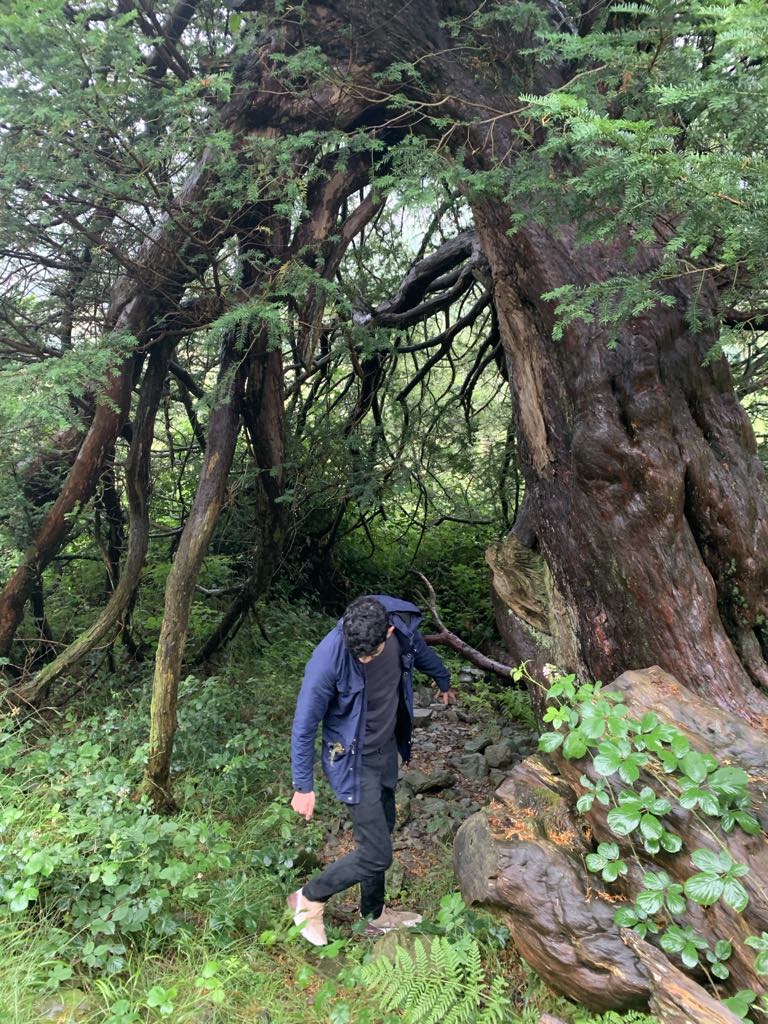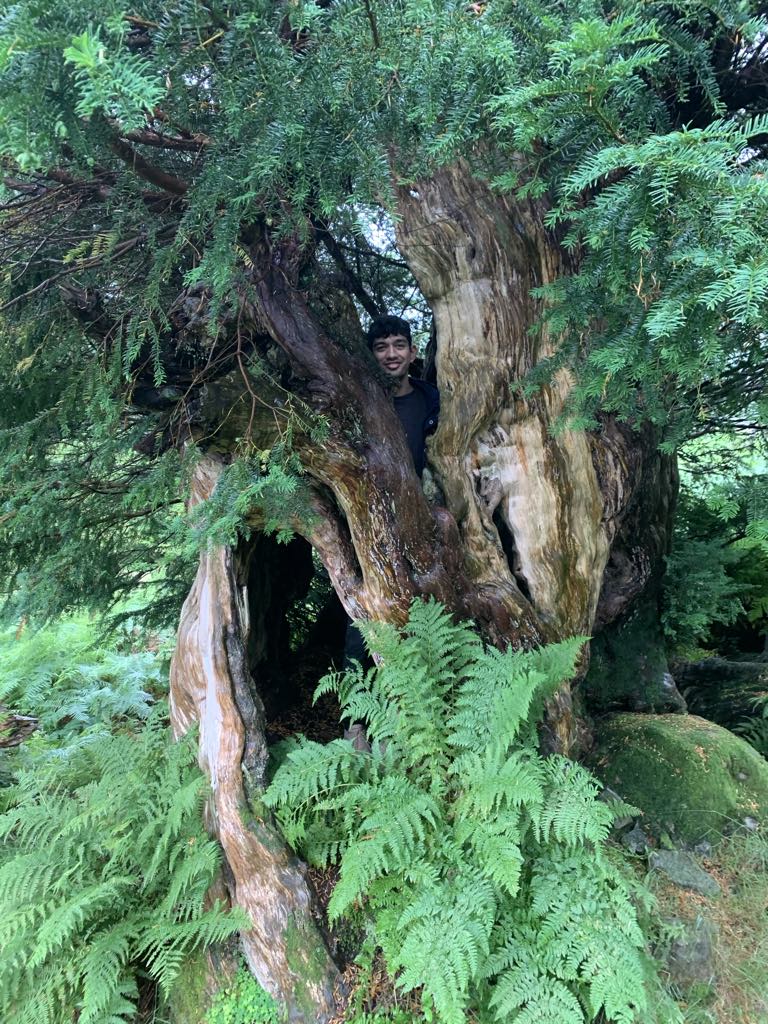Of vast circumference and gloom profound
This solitary Tree! -a living thing
Produced too slowly ever to decay;
Of form and aspect too magnificent
To be destroyed. But worthier still of note
Are those fraternal Four of Borrowdale,
Joined in one solemn and capacious grove;
Huge trunks! -and each particular trunk a growth
Of intertwisted fibres serpentine
Up-coiling, and inveterately convolved,
– Nor uninformed with Fantasy, and looks
That threaten the profane; -a pillared shade,
Upon whose grassless floor of red-brown hue,
By sheddings from the pining umbrage tinged
Perennially -beneath whose sable roof
Of boughs, as if for festal purpose decked
With unrejoicing berries -ghostly Shapes
May meet at noontide: Fear and trembling
Hope, Silence and Foresight, Death the Skeleton
And Time the Shadow; there to celebrate,
As in a natural temple scattered o’er
With altars undisturbed of mossy stone,
United worship; or in mute repose
To lie, and listen to the mountain flood
Murmuring from Glaramara’s inmost caves.
(The illustration here is the “The Lorton Yew” by Harry Goodwin, from Through the Wordsworth Country (1887), a series of drawings inspired by Wordsworth. The Lorton Yew is another famous yew of the area, mentioned alongside the Borrowdale Yews in the same poem.)
During a tour of the Lake District, my wife and I visited the Borrowdale Yews – four 2000 year old trees considered some of the oldest living organisms in the UK. The trees were described by William Wordsworth in his poem ‘Yew Trees’. We assumed that any group of trees memorialised by a household name like Wordsworth would naturally be a tourist attraction, and therefore easy to find. We were wrong. With little more to go off than a dubious set of Google Maps coordinates published on somebody’s rather old-school website (the grove was not officially listed as a location), we found ourselves hopping over streams and trekking halfway up a dangerous mountain (in the midst of a summer storm) before we finally found the ‘Fraternal Four’. The yews were as venerable and stately as Wordsworth made them seem. I sat inside the enormous hollow of the tree, plucked a small piece from the inside of its trunk, and pocketed it. I still have it today. Below are some pictures of the trees:



Hopefully these pictures give some sense of the colossal muscle of these things, as well as the extremes of gnarledness that led Wordsworth to speak of ‘intertwisted fibres serpentine/ Up-coiling, and inveterately convolved’. There is a sort of ripple in the sinew that only advanced age can confer. As with most ancient trunks, this one was hollow, and thus accessible. On the inside, the floor was made up of tree debris, what Wordsworth calls ‘sheddings’. I should point out that these photographs give an inaccurate impression of the tree being on flat land. Actually, it is perched on a steep incline, not too far up the mountain but certainly not near the ground either. The path to get to it, (which you can see the camera pan to at around 0:11 in the video below), was patchy and unpredictable, and we were essentially out on a limb the whole time wondering if the coordinates we were working off had any validity whatosever. This made it fairly rewarding when we finally got there.
When we got there, we found a national trust sign commemorating the trees. Apart from that, it does not appear that they are looked after. Nobody in the area seems aware of their existence.
Wordsworth planted eight yew trees in the churchyard in Grasmere in which he now lies buried. One of these yews marks his grave.
Leave a Reply